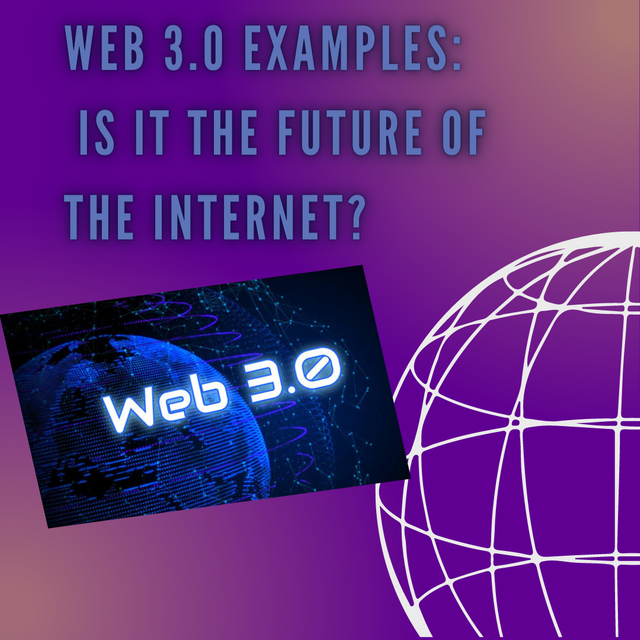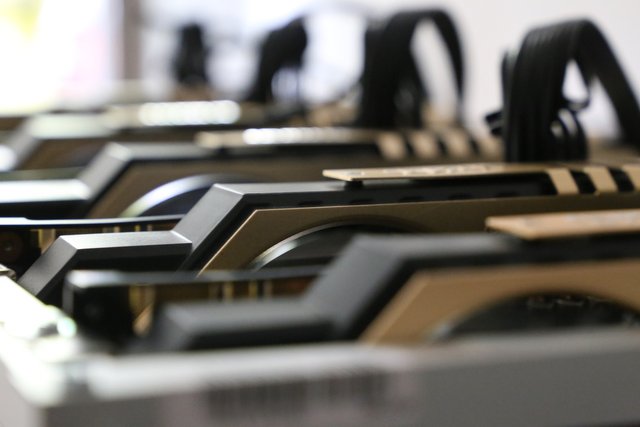Web 3.0 Examples: Is It the Future of the Internet?
WEB 3.0 (or, as it is more commonly known, "Web3") is a relatively broad set of ideas for how the web of the future should look and function. We are currently somewhere between the worlds of Web 2.0 and Web 3.0, and the exact shape of the web of the future is by no means defined.
An important fact to keep in mind before starting any discussion on the web is that it is different from the Internet. The Internet is the physical networking equipment and computers that keep the world connected, along with the Internet Protocol that describes how all of these devices communicate with each other.
The web is a type of service (or group of services) that runs on the Internet. It is the most common part of the Internet for the user, but other services (such as FTP or BitTorrent) are not part of the Web. They just share the same bandwidth.
The first websites were hosted in many places. Some were on large servers inside a company's IT department, and others were hosted on people's home computers. Web content was not yet centralized in the gigantic data centers we know today.
Web 1.0 content was mostly "read-only" static web pages that were not interactive. In other words, you'll visit a website to get information, but it won't return any data to you. This is the defining difference between Web 1.0 and Web 2.0.
With Web 2.0, information started flowing both ways. This is the era of social media platforms and user generated content. On this social web, end users post photos, personal information and more on social networks like Facebook and LinkedIn where everyone can see them.
Hosting services are starting to be centralized in data centers owned by a handful of powerful technology companies. Web browsers got so advanced that they could basically run web applications with sophisticated 3D graphics.
User data is the most valuable commodity for these organizations, who use it to drive e-commerce or sell it to third parties. However, companies like Microsoft and Amazon are investing in providing centralized web services that take personal data and turn it into profitable insights.
At its core, the idea of Web3 is that the web is not controlled by a few central authorities. Whether it's government or corporate is irrelevant, Web3 puts (theoretically) user data and web content in the hands of users. It also enables the web where users can directly benefit from their data and all that money that moves on the web every day.
The term "Web3" was coined in 2014 by Gavin Wood, co-founder of the Ethereum blockchain, which we will discuss later.
Web3 is meant to live up to a certain value. For one thing, it is decentralized and has no central authority that owns all the data and profits from it. Web3 applications are open source. This means that everyone can transparently see the algorithms and software functions in an application without the possibility of sneaking in a backdoor.
So, in a nutshell, Web3 is a democratized web based on open source applications that gives users complete control over their data and a means to share the profits generated by their content.
There was some confusion because another completely different concept called Web 3.0 was created by the "father of the web" Tim Berners-Lee. The World Wide Web Consortium (W3C) defines Web 3.0 (the "Semantic Web") as an extension of Web technology standards.
The Semantic Web can be more difficult to understand than Web3. However, this amounts to a formal metadata standard that allows all kinds of machine-to-machine operations, which in turn enables semantic understanding of web content.
In practice, Web 3.0 is not yet a reality, although modern Web technologies can do some of the things that define the idea of Web 3.0. We won't say much more about the semantic web here, but keep in mind that some of the things you may read under the Web 3.0 label are about something completely different from Web3, whereas "Web3" simply refers to what we're discussing here. here.
Now that we've clarified the differences between Web 3.0 and Web3, let's take a look at some of the web technologies that qualify as Web3.
The predicted third generation of the web sounds enticing on paper, but practical challenges prevent it from becoming a reality, at least in its pure, idealistic form. Web3 represents a level of connectivity never seen before on the Internet. As complex as the modern web is, it pales in comparison to the sheer number of nodes involved in a decentralized web-focused Web3 scenario.
However, the biggest problem with Web3 is not so much technology, but politics. There are serious questions about privacy. Although open to public scrutiny, what new methods of deception and manipulation are possible? Can we move away from certain central authorities altogether? Web3 is such a radical concept that it will be some time before we know the answers to these questions, and in some cases the risk of abandoning tried and tested systems may be too high for experimentation.



If you want to contribute to the development of Web3 products, then you should definitely find a truly convenient and modern platform with which it will be most convenient to create games and other Web3 products. A good solution would be Immutable Community. First of all, Immutable is a really cool platform with a user-friendly infrastructure. Having a large community is an added benefit.